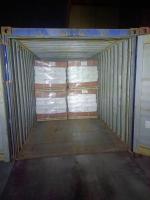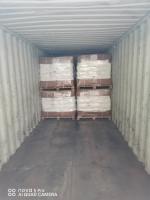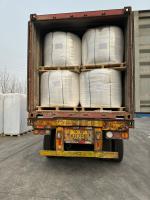Our Products
Polyacrylamide / liquid anionic emulsion All Clear AN80E can be replaced by Chinafloc em3018

All Clear AN80E IS a kind of anionic polyacrylamide emulsion with medium chagre and very high molecualr weight .mainly used for water treatment and kinds of mining processsing.
What is a liquid anionic polyacrylamide emulsion
An anionic polyacrylamide emulsion (commonly referred to as APAM emulsion) is a specially formulated, high-molecular-weight polymer with negatively charged functional groups (anionic) which is supplied in a liquid emulsion format rather than a solid powder. Emulsions offer easier handling, quicker dissolution (or activation) and often allow more controlled dosing. For example generic product families describe “white water-in-oil emulsion” anionic PAM flocculants for clarification and solids separation.
In the case of All Clear AN80E, the “AN” prefix suggests an anionic polymer, the “80E” likely indicates a particular molecular weight/charge grade in emulsion (E) form. Because the publicly available specification for AN80E is not easily found, the following must be treated as a reasoned generalization based on how anionic PAM emulsions are typically used.
How it works — Mechanisms of action
When added to water or slurry containing suspended solids or fine colloids, anionic PAM emulsions work primarily by:
-
Bridging / floc formation – The long polymer chains adsorb onto multiple suspended particles and bind them together into flocs which settle or filter more easily.
-
Charge destabilization / colloid aggregation – The anionic charge interacts with positively charged sites or neutralizes repulsive charges on particles, increasing aggregation and enhancing settling or dewatering.
-
Improvement of solids–liquid separation – The polymer assists in pulling fine particles out of suspension, increasing floc size, improving clarity of supernatant, and reducing sludge volume or improving dewatering. Typical literature on PAM emulsions outlines these modes.
The emulsion format offers additional operational advantages: easier storage & handling, quicker activation (less shear damage on chains), potentially smoother feed dosing, and better control of concentration/dilution.
Key application areas for AN80E (via anionic PAM emulsion)
Below are the main sectors and use-cases where an anionic PAM emulsion grade such as AN80E is commonly employed.
1. Industrial & municipal water/wastewater treatment
-
In industrial plants (metallurgy, mining, metal finishing, chemical, petrochemical) the emulsion can be fed to clarifiers, settling tanks, flotation or filtration systems to enhance the removal of suspended solids and improve effluent clarity.
-
In municipal wastewater treatment, it may be applied as a flocculant aid downstream of coagulation to help aggregate colloidal solids, speeding settling, improving filtration and reducing sludge load.
-
In sludge conditioning and dewatering, the polymer helps improve thickening or filter/centrifuge performance, reducing final moisture content and enhancing throughput. Typical anionic emulsion data sheets specify “used as flocculant in a wide variety of municipal and industrial wastewater treatment applications including clarification and dewatering.”
Thus, AN80E is likely suited for clarifier feed, sludge belt press or centrifuge feed, or industrial effluent treatment.
2. Mining, mineral processing & tailings management
Anionic polymer emulsions are used for fine solids management in mining operations: thickening tailings, recycling process water, reducing pond volumes, and improving water clarity for reuse. The bridging and settling acceleration help fine clay or silt particles that are otherwise slow to settle. Using an emulsion form (like AN80E) helps ease continuous dosing and reduces downtime.
3. Soil erosion / sediment control & stormwater
While many soil-erosion applications use powder grades, liquid/emulsion anionic PAMs are increasingly used for runoff treatment, exposed soils, sediment ponds and irrigation systems. They help bind fine particles, reduce crusting or slaking of soils, improve infiltration and reduce sediment transport in runoff. For example, design specifications require that “Liquid/Emulsion form of Anionic Polyacrylamide” may be applied for erosion control.
Hence, AN80E could be used in stormwater sediment basins, construction site runoff treatment, irrigation run-off control, or slope stabilization treatments when an emulsion form is preferred.
4. Paper, pulp, textile & manufacturing auxiliaries
In some manufacturing processes, anionic PAM emulsions are used as retention and drainage aids (in pulp & paper), as flocculants in dyeing/finishing wastewater (textiles), or for clarification of process effluents. The emulsion format enables easier integration into continuous processes and controlled dosing.
5. Oil & gas / produced water / drilling fluids
In oil & gas operations, liquid anionic polymers can be used in produced water treatment, to flocculate fine solids, to treat drilling cuttings suspensions, or in enhanced oil-recovery type solvents. The robust nature of emulsion polymers allows them to withstand more challenging environments (higher ionic strength, brines) if properly selected.
Why use all-clear AN80E / benefits
Here are the major benefits and operational considerations when using a liquid anionic PAM emulsion like AN80E.
Benefits
-
Ease of handling & dosing: Emulsion form (liquid) allows simpler feed systems, less dust, quicker dissolution/activation.
-
High efficiency at low dosage: Due to long chain length of PAM, small feed rates often suffice to achieve effective flocculation.
-
Improved clarity / faster settlement: In water/waste-water treatment, leads to lower turbidity, faster settling, better filtration and lower chemical consumption overall.
-
Reduced sludge volume / improved dewatering: In sludge applications the polymer helps compress floc, enhance water release and reduce disposal costs.
-
Versatility across pH / conditions: Many anionic PAM emulsions operate effectively over wide pH and ionic strength ranges. For example generic emulsion flocculants list good performance over pH 4-11.
Operational/Key Considerations
-
Application-specific grade selection: The molecular weight, charge density and emulsion formulation must match the solids/colloids to be treated, the ionic strength of the water, pH, temperature, etc. Using a mismatched grade may reduce performance or increase cost.
-
Dilution/preparation: Even though an emulsion is liquid, usually it must be diluted to correct working concentration (for example 0.1 – 0.5% solids in solution) to optimize mixing and avoid shear-break of polymer chains. High shear pumps may degrade performance.
-
Proper mixing & feed location: The polymer solution must be well dispersed into the suspension, often via a feed injector just upstream of flocculation or settling zone. Poor feed location or slow mixing reduces efficiency.
-
Avoid over-dosing: Excess polymer may lead to weaker floc structure (paradox of excess bridging), carry-over of polymer into effluent, or increased chemical cost.
-
Storage & shelf life: Emulsion forms usually have shelf life (6-12 months) if stored correctly (cool, sealed, no freezing). Emulsions may separate or degrade if temperature extremes or contamination occur.
-
Environmental/safety concerns: While anionic PAM is generally safer than some heavy-metal or alum coagulants, any polymer feed should be properly handled (avoid skin/eye contact, inhalation of sprays, control spills) and operators should reference the SDS for the specific product. For example one SDS for All Clear® generic shows irrigation of skin, serious eye damage warnings.
-
Integration with existing treatment/erosion-control practices: In many cases the polymer works best when combined with mechanical/structural separation, chemical coagulation, proper hydraulics, or soil-cover practices (in erosion cases).
Typical usage scenarios for All Clear AN80E
Here are plausible usage scenarios for the AN80E grade, based on how liquid anionic PAM emulsions are typically used:
-
Clarifier feed at a metal finishing plant
A plant treating wastewater laden with fine suspended solids after electroplating uses AN80E. The polymer is diluted (say 0.3% solution) and injected just upstream of the flocculation tank. Optimal dosage found via jar tests might be e.g. 1–3 mg/L active polymer. Flocs grow quickly, settling improves, turbidity drops, effluent meets discharge limits. -
Sludge belt press dewatering
The sludge from a municipal digester is thickened and sent to a belt press. AN80E is added to the feed line, flocculation is improved, sludge cake solids content increases (dryer cake), polymer dosage is reduced compared to older polymer, disposal costs drop. -
Tailings thickener in mining operation
A mining tailings stream carries fine silts. AN80E is dosed into the underflow of the thickener feed zone, causing faster settling of fines, higher underflow density, better water recovery. Because the polymer is in emulsion form, feed system is reliable in rugged plant environment. -
Construction site sediment basin
Stormwater runoff containing suspended clay is routed into a sediment basin. AN80E is fed at low dosage into the inlet channel or via injection into the flow, enabling rapid settling of clay particles, lowering turbidity of the pond outflow. The operator benefits from the ease of using a liquid polymer rather than powder. -
Textile plant dye-bath wastewater treatment
A textile finishing line discharges water with fine dye and colloids. AN80E is added downstream of a coagulant stage to enhance clarification. Because the polymer is anionic, it complements the prior charge neutralization step and helps form larger flocs, improving filtration and reducing colour load.
Summary
In summary, a liquid (emulsion) anionic polyacrylamide such as All Clear AN80E is a high-molecular-weight, negatively-charged polymer provided in emulsion format for ease of use. It is used across a wide range of industries and treatment scenarios: wastewater/industrial effluent treatment, sludge dewatering, mining tailings thickening, erosion/sediment control, manufacturing auxiliaries and more. Its benefits include improved flocculation and settling, reduced chemical consumption, easier handling and dosing, and enhanced solids-liquid separation.
For optimal performance: ensure that the grade (molecular weight, charge density) matches the application; properly dilute and feed the polymer; maintain good mixing and feed placement; avoid overdose; store properly; and integrate with other treatment or erosion-control measures.





